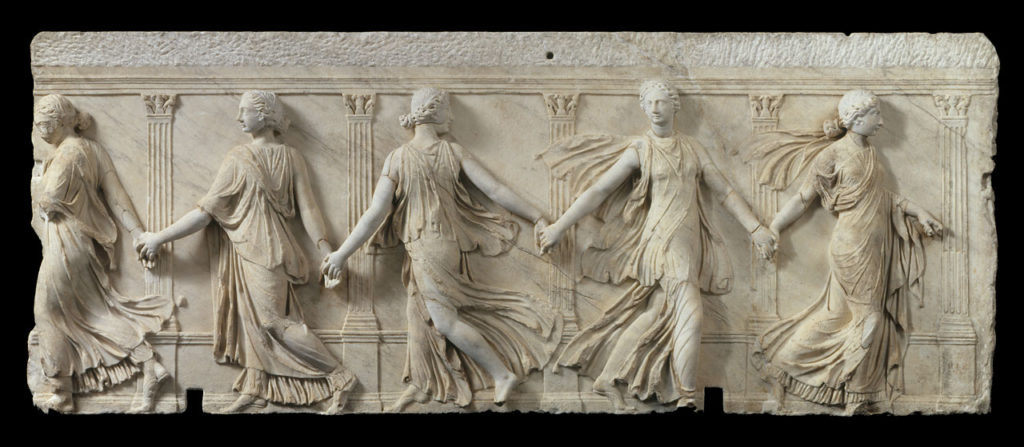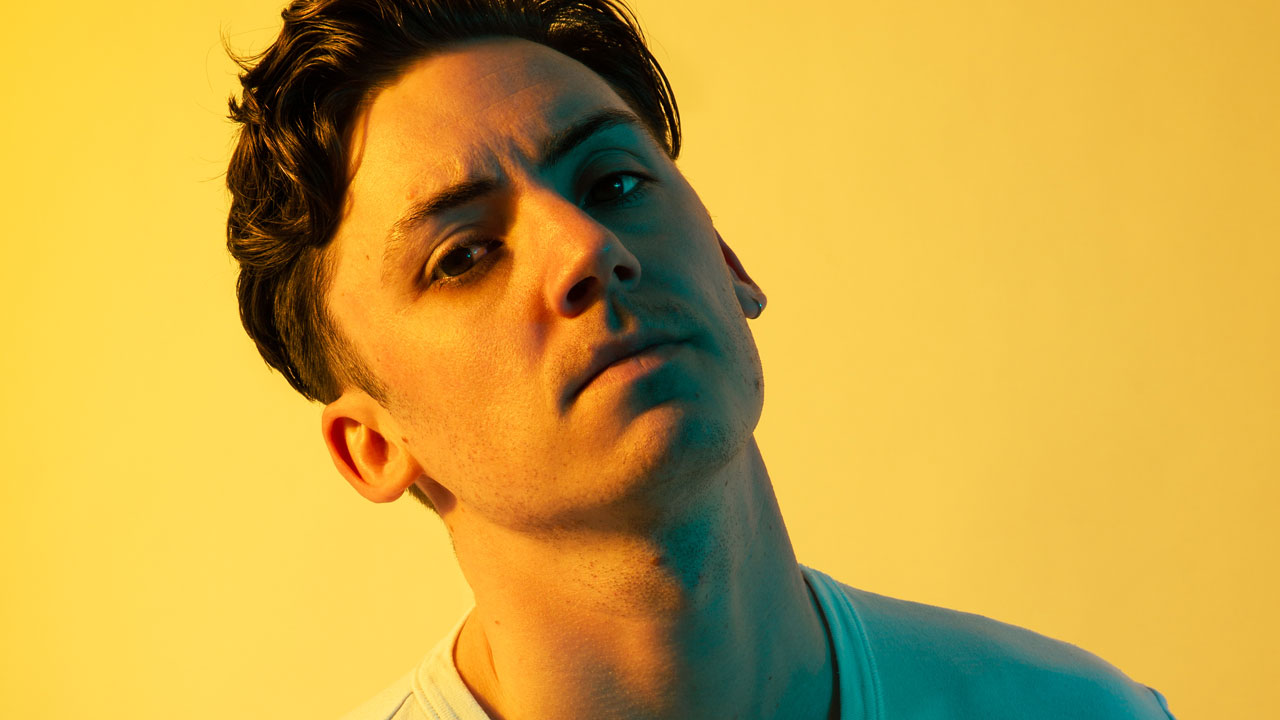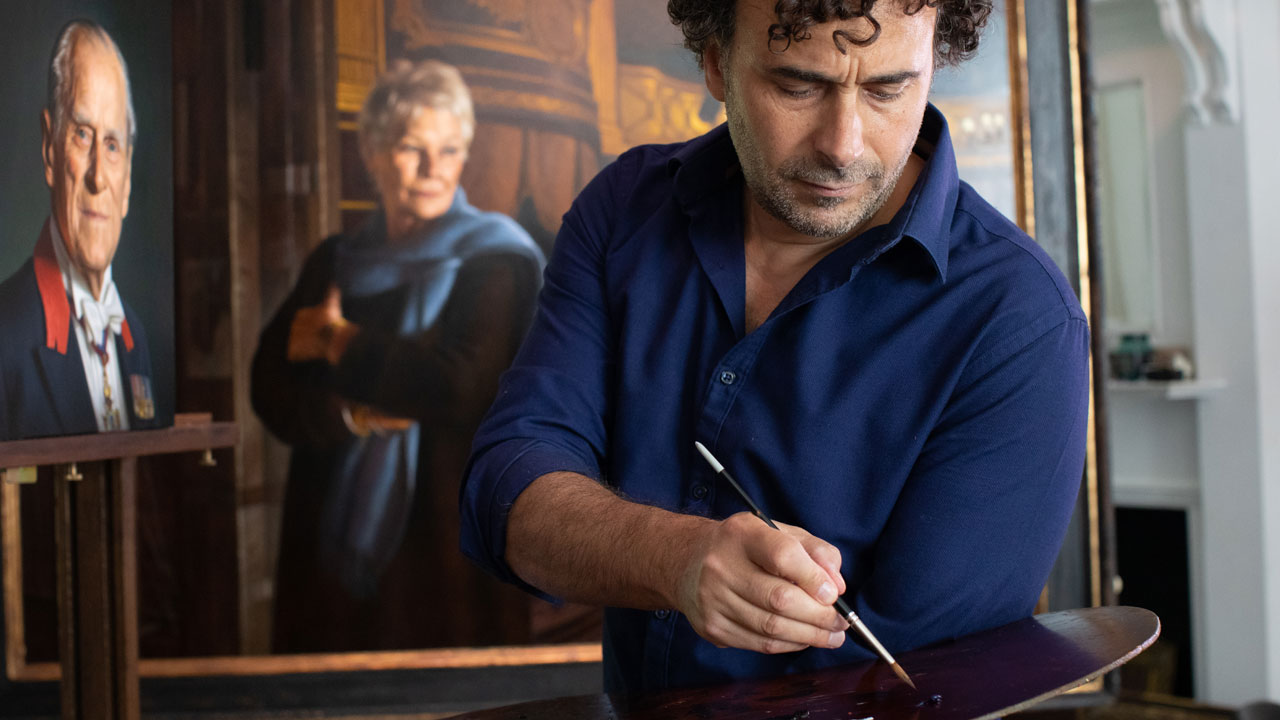From the frenzied revelries of the Maenads on Ancient Greek pottery to the slow-motion circling of the three graces in Sandro Botticelli’s Primavera, and on to the beloved ballet dancers of Edgar Degas and the weightless nude figures of Henri Matisse circling in thin air, one thing is clear: visual artists have long been in love with dance. But a major exhibition at London’s National Gallery, Poussin and the Dance, is intriguingly dedicated to an artist whose connection to dance is far less well known.
Nicolas Poussin was born in Normandy in 1594. Often described as the father of French classicism, his meticulously constructed scenes of characters snatched from classical mythology or biblical sources, and drenched in academic reference points, cause many viewers to find his work coolly clever but not emotionally fulfilling. Yet there’s a side to not-so-jolly Poussin art history has kept slightly hidden. Focusing on the late 1620s and 1630s after the French painter had relocated to Rome, Poussin and the Dance celebrates a series of artworks overbrimming with writhing bodies, tipping wine jugs and heady abandonment. These are paintings with the colour scheme of Frederick Ashton’s La Fille mal gardée and the attitude of Pina Bausch’s The Rite of Spring.
Many of the artworks in the show depict scenes relating to Bacchus, the Greek god of wine, or more generally show dance as a powerful, almost terrifying compulsion – à la The Red Shoes. Like all of the French artist’s works, these paintings are crammed with the type of scholarly allusions Poussin’s well-educated patrons would have thoroughly appreciated, while also being warm-blooded, visceral artworks. ‘The erudition and antiquity is all there to be unpicked if you were the kind of learned person in the 17th century who knew about the debates around Egyptian bull gods. But equally, you can just enjoy it all on a really visual, physical level,’ says Francesca Whitlum-Cooper, co-curator of the exhibition.

It isn’t just subject matter which repeats throughout the artworks, however. Three of the paintings on display – A Bacchanalian Revel Before a Term (1632–33), The Adoration of the Golden Calf (1633–34) and A Dance to the Music of Time (1634–36) – all contain a strikingly similar motif: a small group of dancers linking hands and rotating in a circle. It’s an interesting entry point into Poussin’s understanding of dance because of what circular dance means in real-world performance. As choreographer Shobana Jeyasingh explains, ‘circular dance always represents the order of the world. The concentration is not on what the body is doing, but the fact that there are bodies in a circle.’
In each of the three paintings, Poussin uses the dancing circle image in different ways. For example, in A Dance to the Music of Time, an allegorical painting that first appears to show the most constrained version of this dance, the basic concept of balance and order is subtly undermined. ‘How he disrupts the metaphor is so interesting,’ Jeyasingh says. One reason being, the way ‘there’s three women and one man, so there’s tension.’ The facial expressions of the dancers also suggest a Modernist-like angst that is ‘not calm and not about order.’
Visitors to the National Gallery will be able to see the paintings alongside the classical antiquities that inspired the artist. The most significant of these is the Relief of Five Dancers Before a Portico, more famously known as The Borghese Dancers. Despite being arranged in a line, the Borghese Dancers’ conjoined hands, open chests and fluttering drapery make them a clear reference point for Poussin’s circular dances. For Jeyasingh, there is not only ‘something so amazingly elegant and charged,’ about the ancient artwork, but also something ‘totally convincing’ about it as a static representation of movement. Why? Because of the feet. ‘As someone who looks at dancing bodies, I look at the feet and the feet always lead me somewhere,’ she shares.

‘Poussin is obsessed with dance, but there’s no evidence he got near actual dancers’
Francesca Whitlum-Cooper
Correspondingly, it is the feet that prevent Poussin’s paintings from accurately capturing dance. Returning to A Dance to the Music of Time, Jeyasingh highlights the problems with one dancer’s lower body. ‘What you see is a foot that’s very undecided. It’s not technically stretched, nor is it technically flexed. And I think: Well, what’s the body doing with that foot just very heavily landing there in space?’ she explains. ‘It’s the first thing which hits my eye because I’m thinking about the credibility of the physicality.’
This choreographer’s-eye-view of the paintings differs from the traditional art historical one, which tends to see Poussin’s paintings as exemplars of exactness and planning. Using the example of The Bacchanalian Revel, Whitlum-Cooper says, ‘art historically, we tend to go: “These feet are so carefully choreographed because, like, this guy’s toe is touching that lady’s leg…” The way it’s laid out on the canvas, people often talk about how meticulous it is. But, you’re so right – they are not actually dancers’ feet, as it were.’
Along with the antiquities, the exhibition also features the preliminary and supplementary images Poussin created alongside the paintings. These drawings, which often contain almost-nude figures, have more of a spontaneous feel than their painted counterparts. Perhaps, as Whitlum-Cooper suggests, because working with brush and ink simply allows for greater speed of completion than a laboured-over oil painting: ‘it’s a much more lively medium.’

Francesca Whitlum-Cooper. Photo: National Gallery, London 
Shobana Jeyasingh. Photo: Chris Nash
Shorn of the elaborate drapery cloaking them in the oils – some of which flutters somewhat improbably – the dancing bodies in Poussin’s drawings seem to move with greater ease. Jeyasingh ingeniously compares the relationship between the drawings and the paintings to the difference between watching dancers in a rehearsal room in their leotards and then seeing them perform in full costume on stage. ‘You don’t need to see somebody in the nude in order to see what a dance is about,’ she states. And yet the addition of fabric can end up feeling, she admits, like ‘a bit of a loss.’
Poussin’s other preparatory practice – which is also represented in the show – was to make small wax figurines and set them up in a miniature theatre-like box. The model even had shutters used to control the fall of light onto the minute scene. Again, this is further evidence of Poussin’s fastidious methods of working, but it’s also interesting for another reason. For, despite all his dedicated scrutiny of antiquities and figurines, he never did what many other artists famous for depicting dancers, like Degas or Laura Knight (a veritable expert in painting feet), did: paint from real-life. As Whitlum-Cooper says, ‘Poussin is obsessed with dance, but there’s no real evidence he gets near actual dancers!’ In fact, as his interest in the dancing circle motif shows, he could be said to be more interested in ‘dance as metaphor or allegory; dance as meaning, rather than dance itself.’
Yet another dimension to his paintings resonates with the realities of dance and how we experience it. Poussin’s dramatic masterpiece, The Adoration of the Golden Calf, shows the Israelites joyfully worshipping a bovine idol as Moses descends angrily from the mountains, stone tablets in hand. In the foreground, dancers raise their arms aloft in happy abandon and another group – the audience, as it were – gaze on them and their shining animal god.
‘The components of choreography are very similar to painting. It is a visual art’
Shobana Jeyasingh

Composition, here, is everything. Moses, who could be the focus of the story, is relegated to the upper left: a tiny, angry figure battling against this tidal wave of revelry. And the golden calf, which might also be the centre point, is in fact skewered to one side. Cerulean blue, burnt peach and an earthy red are repeat throughout, with the blue in particular leading the eye into what Whitlum-Cooper calls the ‘vortex’ of the painting. Poussin’s distribution of colour, which remains an attribute of his later work, has both order and fluidity. It is, as Jeyasingh suggests, ‘rhythmic’. And his consideration of how the viewer would take in the scene as a whole – the framing of the picture – has its own overlap with the way choreographers or theatre directors continuously think about what a scene on stage will look like from the vantage point of the auditorium seats.
So while the papa of French classicism might not have got the details of a dancer’s body quite right, whether with undecided feet or some implausibly undulating drapery, he did speak the language of dance in a different way. The perfect splattering of coloured costuming, a building of dramatic tension and whirling movement which directs the viewer’s eyes down a chosen route all make Poussin’s dancing paintings akin to a freeze-frame moment in the most brilliantly staged live performance. And maybe that’s not surprising when, as Jeyasingh says, ‘the components of choreography are very similar to painting. It is a visual art in the end.’
Rosemary Waugh is an art and performance critic who writes for publications including The i, New Statesman, Art UK and The Stage.













